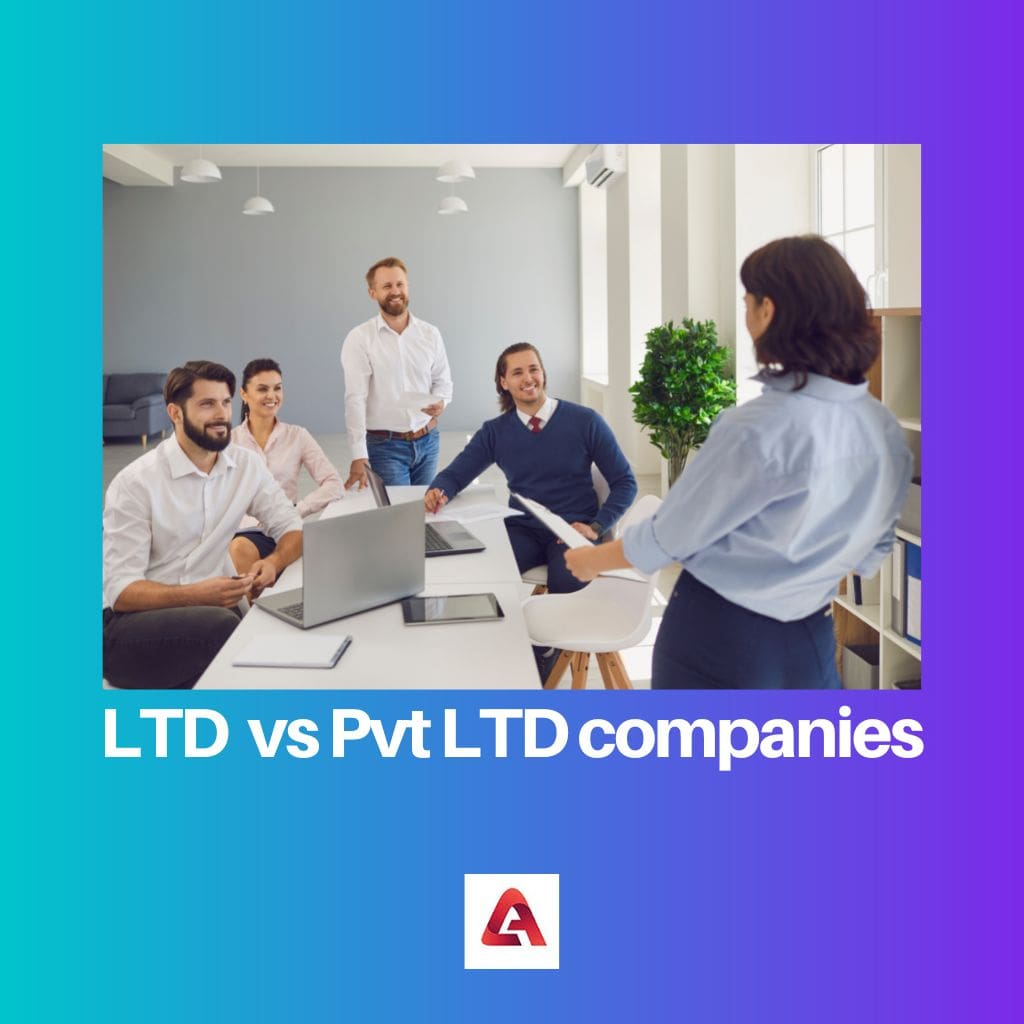An association or a legal entity formed by a group of individuals to start and manage a business is termed a Company. The corporate laws of its jurisdiction organize a company.
Companies can either be public or private enterprises. A public enterprise is one in which the powers are not confined to some people and reside with the public.
Key Takeaways
- LTD (Limited) companies are businesses with limited liability, and the term can refer to both privately held (PVT LTD) and publicly-held (PLC) companies.
- PVT LTD (Private Limited) companies are a type of LTD company that cannot sell shares to the general public and have restrictions on the transfer of shares, providing more privacy and control for the shareholders.
- LTD and PVT LTD companies offer limited liability protection for shareholders and separate the company’s finances from the owner’s. Still, PVT LTD companies are privately-held and have more restrictions on share ownership and transfers.
LTD vs. Pvt LTD Companies
LTD is a Limited Partnership company where the shares can be held by members of the company or members of the public. It requires at least seven shareholders. PVT LTD means Private Limited Partnership and is a company that requires two or more shareholders, and the shares are held by private promoters.

Comparison Table
| Parameter of Comparison | LTD | Pvt LTD |
|---|---|---|
| Shareholders | In a public limited company, the shares are held by the public and are open to everyone. | In a private limited company, shares are held by private promoters. |
| Minimum number of shareholders | An Ltd company requires at least seven shareholders in the company. | A Pvt Ltd enterprise requires at least two shareholders. |
| Maximum number of shareholders | A public Ltd company has no upper limit for the number of shareholders. | A Pvt Ltd company can have a maximum of 50 shareholders. |
| Transfer of shares | The transfer of shares in a public limited company is done through the stock market. | The shares of a private limited company are confined within a group of people and therefore are transferred with the approval of all shareholders. |
What is LTD Company?
Ltd. or Limited refers to a public limited company in which the shares of the company are in the hands of the public. An Ltd company is open to everyone wanting to buy shares.
In a public Ltd company, the minimum number of shareholders must be seven, while it has no limit for the maximum number. The minimum capital requirement to start a public Ltd company is 500000.
A public limited company needs approval from the registrar of companies for the commencement of any business. It must be transparent in its transactions, records, and other activities.
A public company is listed on the stock exchange list; therefore, the transfer of shares occurs through buying and selling in the stock market.

What is Pvt LTD Company?
Pvt Ltd, or a Private Limited company, is a company in which the company shares are held only by a group of individuals. A private limited company is not open to the public.
The minimum number of shareholders in a private limited company is two, while the maximum is 50.
To conduct any business, a private limited company does not require approval from governmental authorities. The company’s owner is free to make decisions related to the company.
A private limited company is not necessarily listed on the stock exchange listing, especially the small companies that cannot opt for the stock market.

Main Differences Between LTD and Pvt LTD Companies
- The shares of an Ltd company are listed on the stock exchange where. This is not the case with a Pvt ltd company.
- The transfer of shares in an Ltd company is done through the trade in the stock exchange, whereas in a Pvt Ltd company, the shares are transferred with the approval of all shareholders.


The definition of LTD and PVT LTD companies is given quite clearly.
Yes, I second that. This is a very well-defined post.
This is a very intellectual post.
Yes, I second your comment.
I agree, this is a good piece of writing.
This post is very informative, it gives us complete understanding about the types of companies and their basic differences. LTD and PVT LTD companies both are equally important in the business world.
I agree, this is a very informative post for people who are starting or want to start a business. Even I have gained knowledge from reading this post.
Indeed, all the points are brief and on point
The post contains some solid information that can be of use to people who are new to business. It explains everything very clearly.
Very well said.
Good to know that it’s a helpful post for new entrepreneurs.
I’m glad I read this post, it helped me get a clear understanding of LTD and Pvt LTD Companies.
Me too! The comparison table is very well made.
Yes, I found that very helpful too.
I find the brief comparison table very helpful and insightful.
Indeed, it’s a detailed post. I loved the comparison table
The explanation of the differences between LTD and PVT LTD companies is very clear, the reader gets a complete idea of what the distinctions are between the two.
Yes, the explanation is very clear and concise. It’s perfect for someone who wants a primer in business law
This is a really useful post for people who are not very familiar with business terminologies.
Agreed, I got a better understanding after reading the post.
This article is not very helpful for people who are already in the business world but can be a great help to the beginners.
I found the references useful.
I agree, it shows that the information is reliable.
Yes, it’s good to see the sources of the information. It was a very well thought out post.